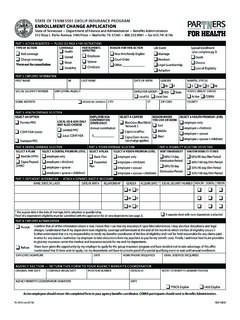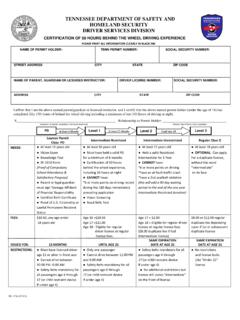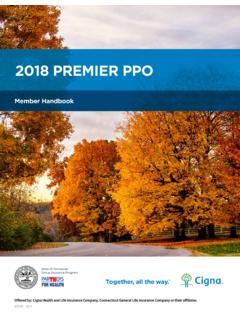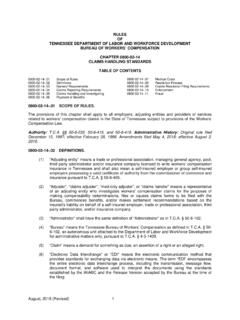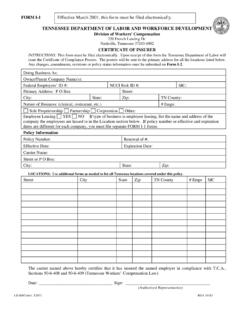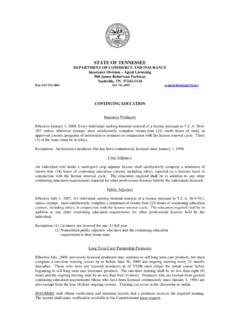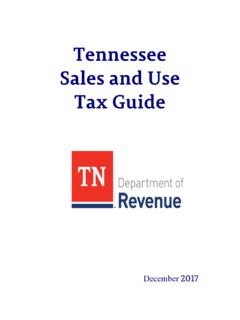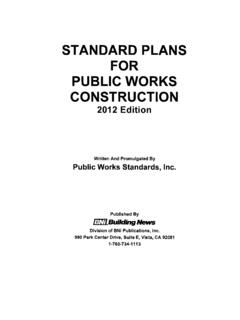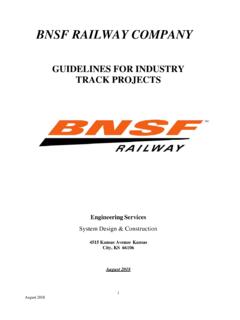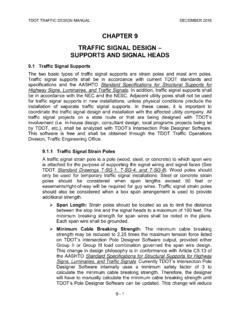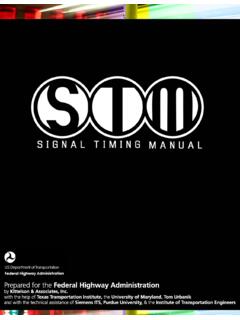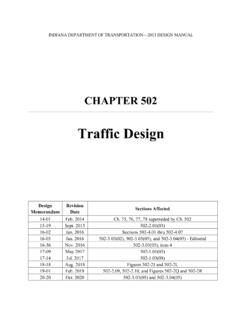Transcription of CHAPTER 7 TRAFFIC SIGNAL DESIGN – OPERATIONS AND …
1 TDOT TRAFFIC DESIGN MANUAL DECEMBER 2016 7 - 1 CHAPTER 7 TRAFFIC SIGNAL DESIGN OPERATIONS AND COORDINATION TRAFFIC SIGNAL Operation Basic Concepts The following are basic concepts in TRAFFIC SIGNAL operation: TRAFFIC SIGNAL Movements TRAFFIC SIGNAL movements refer to the actions of users at a signalized intersection. Typical movements include vehicles turning left, turning right or traveling through the intersection, and pedestrian crossings. In a four-legged intersection it is possible to have twelve vehicle movements and four two-way pedestrian movements.
2 The HCM assigns numbers to each of these movements, as shown on Figure , with the major street on the East West orientation. Figure shows a typical movement numbering with the major street on the North South orientation. TRAFFIC SIGNAL Phases A phase is a timing process, within the SIGNAL controller, that facilitates serving one or more movements at the same time (for one or more modes of users). Phase numbers must be assigned to the movements at a signalized intersection in order to begin selecting SIGNAL timing values. Even phases are typically associated with vehicular through movements and odd phases are typically associated with vehicular left -turn movements.
3 Pedestrian phases are typically set up to run concurrently with the even-numbered vehicular phases and are generally assigned the same phase number as the adjacent parallel vehicular phases. A four-legged intersection with protected left-turn movements will generally follow the phase numbering as shown in Figures and This standard NEMA phase numbering system combines the right-turn movements with the through movements into single phases. Figure illustrates the typical movement and phase numbering (4-phase or 8-phase) used at an intersection with permitted left-turn movements where all of the movements on an approach are assigned to one phase.
4 It is common practice to maintain a consistent phase-numbering scheme within a specific jurisdiction. TDOT TRAFFIC DESIGN MANUAL DECEMBER 2016 7 - 2 Figure Movement and Phase Numbering (East-West as Major Street) Source: Adapted from TRAFFIC SIGNAL Timing Manual TDOT TRAFFIC DESIGN MANUAL DECEMBER 2016 7 - 3 Figure Movement and Phase Numbering (North-South as Major Street) Source: Adapted from TRAFFIC SIGNAL Timing Manual TDOT TRAFFIC DESIGN MANUAL DECEMBER 2016 7 - 4 Figure Movement and Phase Numbering (Permissive Left-Turns) Source.
5 Adapted from TRAFFIC SIGNAL Timing Manual TDOT TRAFFIC DESIGN MANUAL DECEMBER 2016 7 - 5 .3 Ring -and- Barrier Diagrams TRAFFIC SIGNAL phases and their sequence are represented graphically by a ring-and- barrier diagram composed of: Rings: Each ring identifies phases that may operate one after another, but never simultaneously. At any moment there may be only one phase active per ring. Dual ring OPERATIONS allow concurrent (non-conflicting) phases in separate rings to operate at the same time. Barriers: In dual ring operation, a barrier is the point at which the phases in both rings must end simultaneously.
6 Barriers typically separate major and minor street phases. Figure provides an example of a standard NEMA eight-phase, dual ring-and-barrier diagram, with protected leading left-turns (See Section ) on all approaches. A table of active and concurrent phases and a standard NEMA eight -phase actuated controller phase sequence are also shown. TRAFFIC SIGNAL Modes of Operation An intersection may be controlled independently (isolated operation) or have the ability to synchronize to multiple intersections in a coordinated operation.
7 Isolated and coordinated intersections can operate either in pre-timed (fixed) or actuated mode, where detectors will monitor TRAFFIC demand. Furthermore, actuated operation can be characterized as fully-actuated or semi-actuated, depending on the number of TRAFFIC movements that are being detected (See Section ). Advanced types of operation include volume density, TRAFFIC responsive, and adaptive control. Finally, signalized intersections may also operate under special conditions like preemption or priority, or they may be set up to operate in the flashing mode.
8 The selected mode of operation on a signalized intersection will determine its safety and efficiency. The following paragraphs will briefly describe each mode of operation and additional detailed information will be further explored in subsequent sections..1 Pre -timed (Fixed Time) Operation During pre-timed operation, the total green time allocated to a phase will always have a preset time, regardless of demand. For each specific TOD plan the phase sequence is also fixed and phases cannot be skipped. Therefore, a complete sequence of SIGNAL indications ( cycle) will be displayed every time ( fixed cycle length).
9 Figure illustrates pre-timed operation. Advantages: Ideally suited to coordination of closely spaced intersections with consistent daily TRAFFIC volumes and patterns, since both the start and end of green phases are predictable. Such conditions are often found in CBD or downtown grid areas. Also, pre-timed operation does not require detection, thus reducing maintenance needs. Disadvantages: Inability to adjust to fluctuations in TRAFFIC demand potentially generating excessive delays to users of the intersection. TDOT TRAFFIC DESIGN MANUAL DECEMBER 2016 7 - 6 Figure Standard NEMA Dual Ring-and -Barrier Diagram Source: TRAFFIC SIGNAL Timing Manual TDOT TRAFFIC DESIGN MANUAL DECEMBER 2016 7 - 7 Figure Pre -timed and Actuated Operation Source: TRAFFIC SIGNAL Timing Manual TDOT TRAFFIC DESIGN MANUAL DECEMBER 2016 7 - 8.
10 2 Actuated Operation During actuated operation, detection actuations will determine phases to be called as well as phase extension. The duration of each phase is determined by detector input and corresponding controller parameters. For each specific TOD plan, the phase sequence is fixed but phases can be skipped due to TRAFFIC demand being monitored by detection. Therefore, when not coordinated, actuated operation may not always display a complete sequence of SIGNAL indications ( cycle) leading to a variable cycle length.
